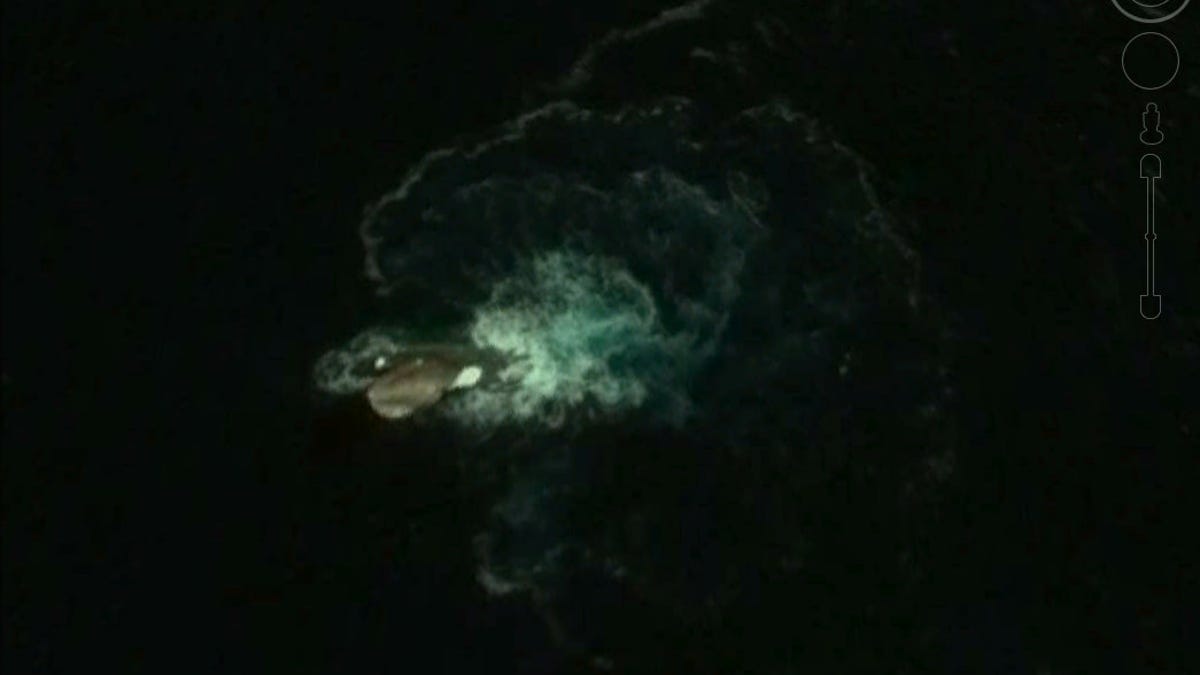'Sea monster' spied on Google Earth hides a watery secret
Is it a kraken? Nessie's cousin? Something much more mundane? We try to make sense of an unusual object seen on Google Earth.
If you've been eagerly awaiting the arrival of author H.P. Lovecraft's deep-sea-dwelling tentacle-faced cosmic entity Cthulhu, you may want to hurry up and call the cult together. Cryptozoologists are excited about a weird shape seen on Google Earth in the ocean near Antarctica. It looks like a brown mass surrounded by swirling green-hued waters.
YouTube user wowforreeel posted a video highlighting the find back in late April, and it's now gaining steam across the internet, because the internet loves a good monster story. Wowforreeel speculates it may be a Plesiosaur fin. Plesiosaur was a large water-dwelling reptile that was at its peak during the Jurassic Period.
Plesiosaurs could get to nearly 50 feet (abut 17 meters) in length. Some monster hunters are convinced the mythical Loch Ness monster in Scotland is actually a surviving Plesiosaur that enjoys chilling in the lake's dark waters. There's one big problem with the Plesiosaur theory for the shape seen on Google Earth: Plesiosaurs are extremely extinct.
Other theories about the watery disturbance are that it's a massive kraken or the source of The Bloop, a loud low-frequency underwater sound that was mysterious at first, but now is attributed to fracturing icebergs.
Leave it up to science to put a damper on the giant monster fervor. Deep-sea biologist and Southern Fried Science blogger Andrew David Thaler says the weird object is actually Sail Rock, an outcropping located near Deception Island. Somebody tell Captain Nemo he can turn the Nautilus around and go home. There's nothing to see here.
The Great Sea Monster Discovery of 2016 is part of the same phenomenon that gets some people so excited about fish, Sasquatch skulls and ancient gods on Mars. The human mind likes to try to make sense of random shapes, which is why we can look at a fluffy cloud and say it resembles a rabbit. It's fun to imagine a giant squid of extraordinary size breaching the ocean surface for a Google Earth cameo, but it's still just a rock.


